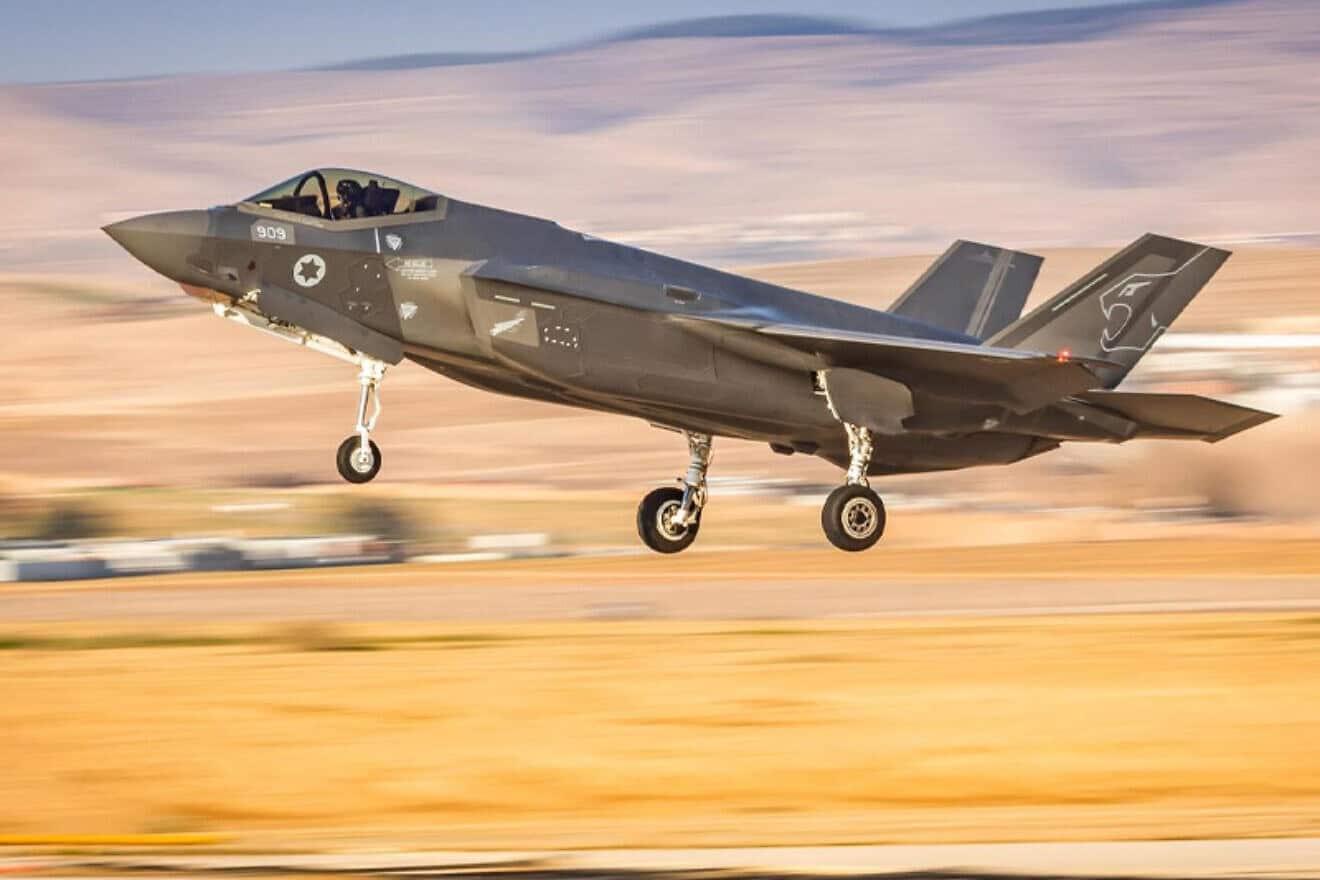F-35 highlights Israel as a unique force multiplier for America
The proven edge of the F-35 has resulted in billions of dollars in savings for American research and development, enhancing the country’s competitiveness in the global market.
By Yoram Ettinger
JUNS
Jul 16, 2-25
Does the United States extend to Israel an annual military foreign aid, or does it make an annual investment in Israel that yields to the U.S. taxpayer an annual return-on-investment of a few hundred percent?
Recent events might shine a light on that.
Israel was the first country to use the F-35 in combat in 2018, overcoming critical technical and mechanical problems. The daily feedback from Israel dramatically enhanced the F-35’s reliability, maintainability and capabilities.
Israeli Air Force offensives on Iran in October 2024 and in June 2025 were accomplished by using U.S.-made combat aircraft (F-35, F-16 and F-15), showcasing the battle-proven edge of the aircraft over the global competition in China, Russia, Britain, France, Sweden and Italy.
This proven edge of the F-35 has resulted in billions of dollars in savings for American research and development, enhancing the country’s competitiveness in the global market. It also yielded a mega-billion-dollar increase in U.S. exports, expanded the U.S. employment base, and upgraded battle and training tactics for the U.S. Air Force.
According to The EurAsian Times, “Israel’s success in extending the range of its F-35I Adir stealth jets by adding drop tanks and conformal fuel tanks, and successfully deploying them for bombing Iran has impressed upon the U.S. Air Force the need to increase the range” of its own fleet.
Noting that “Israeli aircraft had to fly through Turkey, Jordan or Syria, and then Iraq” to reach Iran—a distance of more than 1,100 miles each way—without being refueled and detected, the paper said, “The Israeli F-35s are modified in the following main areas [mostly shared with the U.S. manufacturer and Air Force]: command, control, communications, computers and intelligence (C4I), electronic warfare, and weapons integration [as well as integrating new AI algorithms and predictive maintenance and counter measures] … and the U.S. Air Force can also benefit from studying these modification.”
Further, it said, “Any augmentation of range without midair refueling [which undermines the stealth capabilities] will be beneficial for the U.S., as it could be involved in a confrontation with China in the Indo-Pacific [preferring to reduce dependence on mid-air refueling, which lacks stealth and is vulnerable in war] ….”
The June 14 issue of the Arlington, Va.-based Defense.Info maintained that “Pentagon officials have acknowledged that Israel’s experience provides valuable insights into sustaining F-35 operations during high-intensity conflict.” Those lessons are critical “for future conflicts, particularly in the Pacific theater where the U.S. military anticipates operating F-35s across vast distances with limited logistical support.”
The June 13 issue of Defense.Info said the F-35I Adir “has fundamentally altered the strategic balance in the Middle East, while establishing new benchmarks for fifth-generation fighter integration.”
It reported that “the Israeli Air Force pioneered a sophisticated integration strategy combining F-35I stealth capabilities with F-15I ‘Ra’am’ strike power, creating a force multiplication effect that exceeds the capabilities of either platform alone. This revolutionary approach leverages fifth-generation intelligence gathering with fourth-generation firepower through carefully orchestrated operational sequences. The F-35I serves as an airborne sensor network, providing 360-degree situational awareness and threat warnings to conventional fighters operating in adjacent areas. … This multi-platform doctrine has been validated through thousands of combat sorties across Gaza, Lebanon, Syria and Yemen.”
Defense.Info also noted that “Israeli F-35I aircraft achieved multiple historic firsts, including the world’s first F-35 combat missions in Syria (2018), first F-35 air-to-air kills against Iranian drones (2021), and first operational use of external weapons configuration in combat.”
“The F-35I integration represents a fundamental shift from platform-centric to network-centric warfare, with the aircraft functioning as a central sensor node connecting Israel’s multi-layered defense architecture,” the authors continue. “Integration with Iron Dome, David’s Sling and Arrow systems creates comprehensive coverage across all threat ranges while providing real-time intelligence sharing through advanced datalinks. The aircraft enables multi-domain operations combining physical strikes, electronic warfare, and intelligence gathering in single missions that create strategic effects far exceeding traditional air operations.”
The bottom line: Israel is immensely grateful for receiving a few hundred advanced U.S. military systems that are critical to its survival. This is not a one-way street, but a mutually beneficial, two-way interaction. Each one of the hundreds of U.S. military systems employed by Israel serves as a battle-tested laboratory and innovation center for the U.S. defense and aerospace industries, and a prime generator of battle tactics formulation for the U.S. Armed Forces.
That said, the United States does not extend foreign aid to Israel, but makes an annual investment in Israel, which yields to the U.S. taxpayer an annual return on investment of a few hundred percent.
The full version of this article can be found at The Ettinger Report.

No comments:
Post a Comment